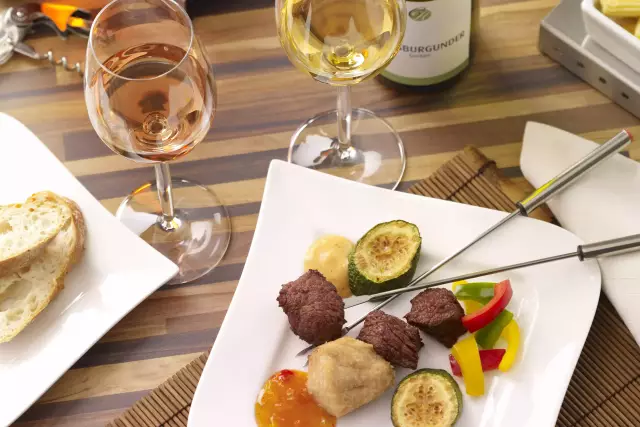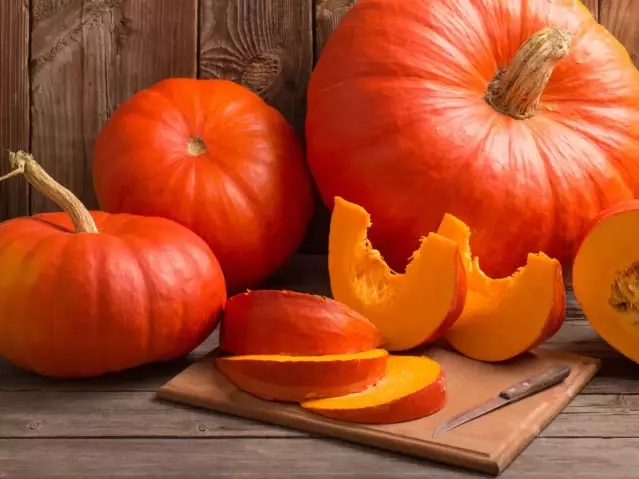Ocean meets Wine
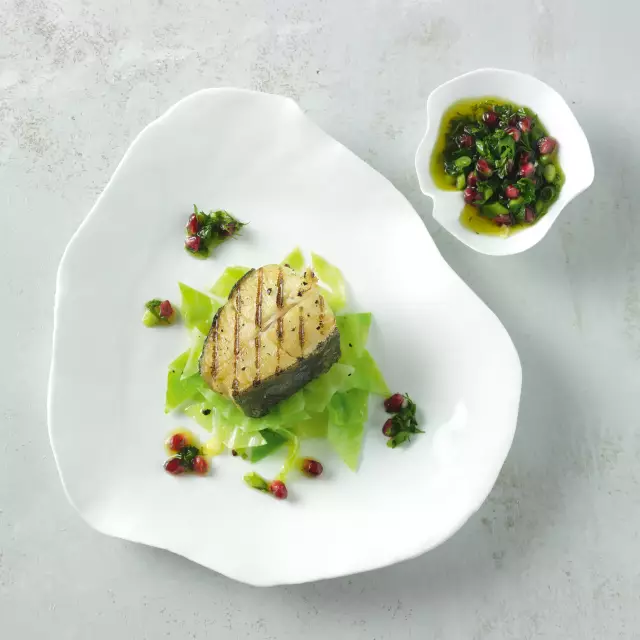
Seafood and fish, paired with delicious wines, sounds like beaches, lively promenades and a wide horizon. Whether prepared Nordic, Asian or Mediterranean: The delights of the oceans harmonize perfectly with German wines if you take a few tips to heart.
Facts
-
70 %
of the earth's surface is made up by the oceans
-
11.034 m
the Mariana Trench is deep
-
9.000 species
different creatures live in the Mediterranean
The great variety of seafood invites you to be creative in the kitchen. And the great variety of German white and rosé wines makes it easy to find just the right wine to go with your crustaceans, mussels and seafood delights. As a rule, rosé or white wines are better companions for shellfish and crustaceans than red wines. This is because the protein of the seafood reacts with the tannins contained in the red wine – and that often leads to a dull, metallic taste.
The classic appetizer is a shrimp or prawn cocktail with a lush cocktail sauce. Since the crabmeat is subtly sweet, the appetizer may even be served with canned fruit such as peach or pineapple pieces. A strong, pleasantly dry single-site Riesling, to be found in many German wine-growing regions, is a harmonious companion for the shrimp cocktail. And if you serve the prawn cocktail along with the aperitif, you will be delighted to find how well it is suited to Winzersekt Brut with Riesling or Pinot Blanc as a base wine.
In the Mediterranean cuisine, crustaceans are often sautéed in a pan with olive oil, garlic, tomatoes and herbs, and they are often served alongside pasta. The fine vegetable aromas are nicely accentuated by a chewy Silvaner or a complex Sauvignon Blanc.
Fans of Asian food may use crustaceans in a Thai curry, prepared with ample amounts of ginger, chili and fresh, crisp vegetables. Lovely with Riesling, Muscatel and Scheurebe with subtle residual sugar. If you prefer dry wines, try your Thai curry with a creamy Pinot Blanc.
Mussels or cockles boast tender meat and a subtle taste. As a rule, they are steamed and served with a sauce that is not too dominant and uses root vegetables, white wine, pepper, cream or tomato puree as ingredients. These mussels also taste great in Mediterranean pasta dishes. Ideally, they are accompanied by not too full-bodied and dry white wines such as Müller-Thurgau, Pinot Blanc or Silvaner. A Portugieser rosé is another great choice.
A dry Winzersekt is not the only suitable companion for oysters, which are enjoyed raw, very well chilled and with just a few splashes of lemon juice. Their pure taste also goes very well with a light white wine with subtle aromas, such as Chasselas from the Markgräflerland region, an Auxerrois from the upper reaches of the Moselle or a Pinot Blanc from Franconia. The adventurous among you might want to try and combine oysters with noble sweet wines, as the Russian tsars used to do. A Riesling Auslese or Beerenauslese from the Moselle or the Middle Rhine region that has aged for a long time is an excellent choice. The saltiness of the oyster will interplay with the slate minerality and the mature fruitiness of these wines.
Seafood such as squid or octopus is often fried and served with a dip of aioli. They go very well with a crisp, fresh and dry Pinot Noir rosé or a dry Pinot Gris. If the shellfish is thinly sliced and served as a carpaccio, marinated in lime juice and olive oil, a dry Silvaner or Sauvignon Blanc might prove to be the best companion.
During the barbecue season, lobster or crayfish can be cut in half lengthwise and roasted on the shell, merely seasoned with butter, salt and pepper. The hearty roast aromas of the barbecue render the taste of the crustaceans even more intense. Consequently, they can take full-bodied wines with wooden cask aromas – such as barrique Chardonnay or Pinot Blanc from the Pfalz region or Baden.
Shellfish such as scampi and prawns are roasted in a grill tray inside their shell, so they don’t lose too much of their juice. All seafood should never be cooked for too long or over too much heat. This kind of seafood likes a fresh Pinot Blanc.
Fish such as trout, char and gilthead are often softer and juicier when grilled wrapped in tin foil rather than directly on the grate. Pinot Blanc, Chardonnay and Silvaner are perfect partners. A light Riesling from the Moselle with subtle fruitiness is welcome as well.
If the fish is prepared directly on the grate or in a grill tray, maybe even marinated or strongly seasoned, it requires a partner such as a stronger Riesling or Chardonnay. A lightly chilled dry red wine can also be an adequate companion for heartily seasoned fish.
Whole fish with herbs can take a juicy Silvaner, which also boats herbal aromas – or even a red wine that is not too full-bodied.
Where is the northernmost vineyard in Germany?
Germany's northernmost vineyard is located on Sylt. On 3,000 square meters, interested people have taken over the sponsorship of 555 vines, from which the "Söl'viin" has been produced since 2014.
Varietals

More recipe ideas
with shrimps Pumpkin soup
with shrimps
- 1 kleiner Hokkaido-Kürbis
- 1 Zwiebel
- 5 cm Ingwer
- 2 EL Butter
- 750 ml Gemüsebrühe
- 300 ml Kokosmilch
- 12 mittelgroße Shrimps
- 2 EL Olivenöl
- Eine Prise Salz & Pfeffer
Peel and dice the pumpkin, onion and ginger and sauté in the butter.
Deglaze with the vegetable stock and sauté for about 15 to 20 minutes until soft.
Sauté the shrimps in a little olive oil and leave to cook over a low heat for a few minutes. Place on wooden skewers and keep warm in aluminium foil.
When the vegetables have been steamed until soft, blend finely with a hand blender. Stir in the coconut milk and season with salt and pepper to taste.
Serve the soup in large cups and garnish with the shrimp skewers.
Freshly baked white bread goes well with this.
- Muskateller (halbtrocken & feinherb)
- Federweißer (brut nature)
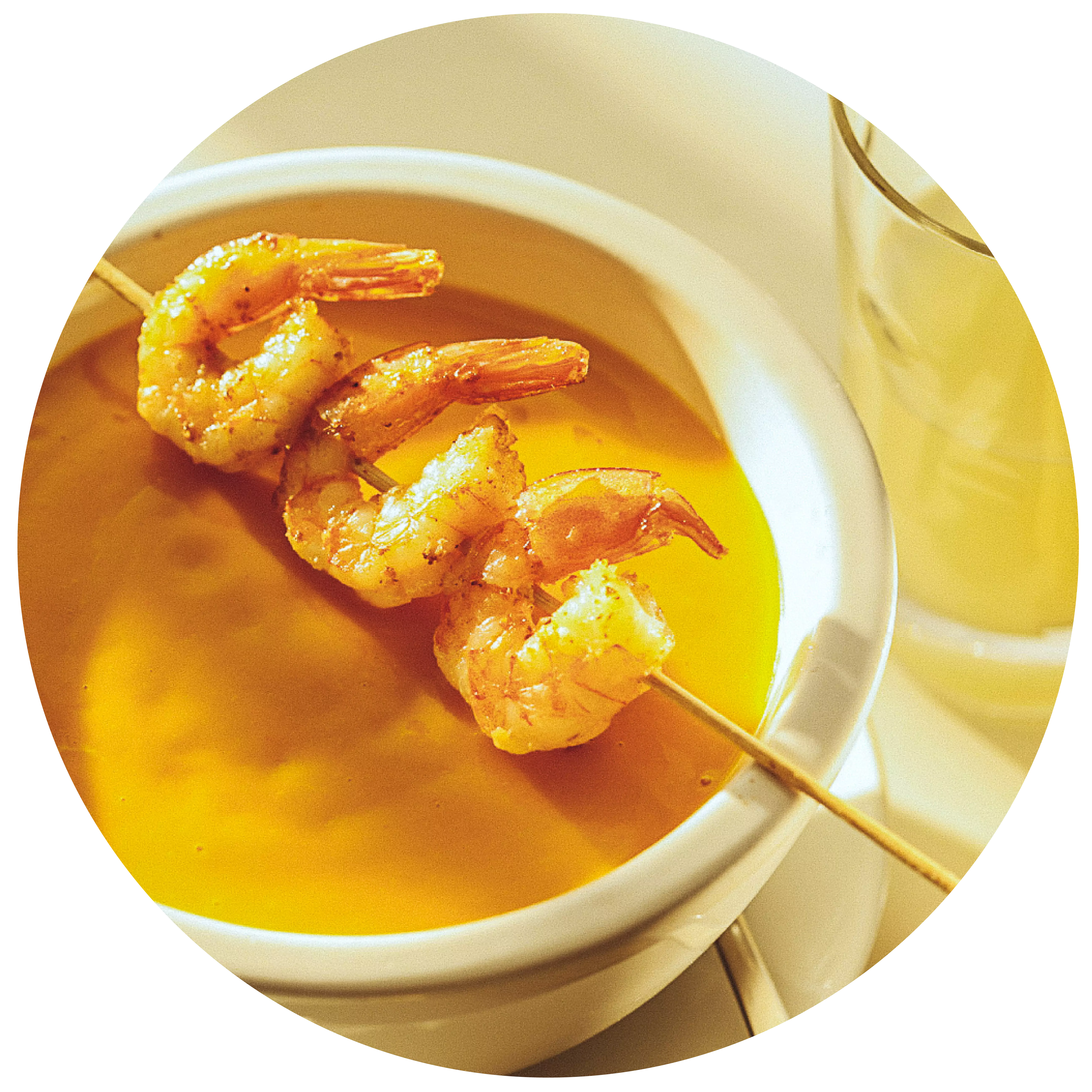
with fresh chanterelles Autumn bruschetta
with fresh chanterelles
- 4 Ciabatta-Brötchen
- 200 Gramm kleine Pfifferlinge
- 4 EL kleingehackte Petersilie
- 4 Zehen Knoblauch
- 80 Gramm Pecorino (Hartkäse)
- 8 EL kaltgepresstes Olivenöl
- Eine Prise Salz & Pfeffer
Preheat the oven to 200 degrees.
Clean the chanterelles. Sauté the parsley in a pan with half of the oil, then add the mushrooms and cook over a low heat for approx. 5 minutes.
Slice the rolls and bake for approx. 5 minutes until crispy.
Chop the garlic into small pieces, spread on the warm bread rolls and drizzle with the other half of the oil. Coarsely grate the pecorino.
Stir the chanterelle and parsley mixture into the pecorino and spread over the halves of the rolls.
- Pinot Gris (trocken)
- Federweißer (brut nature)
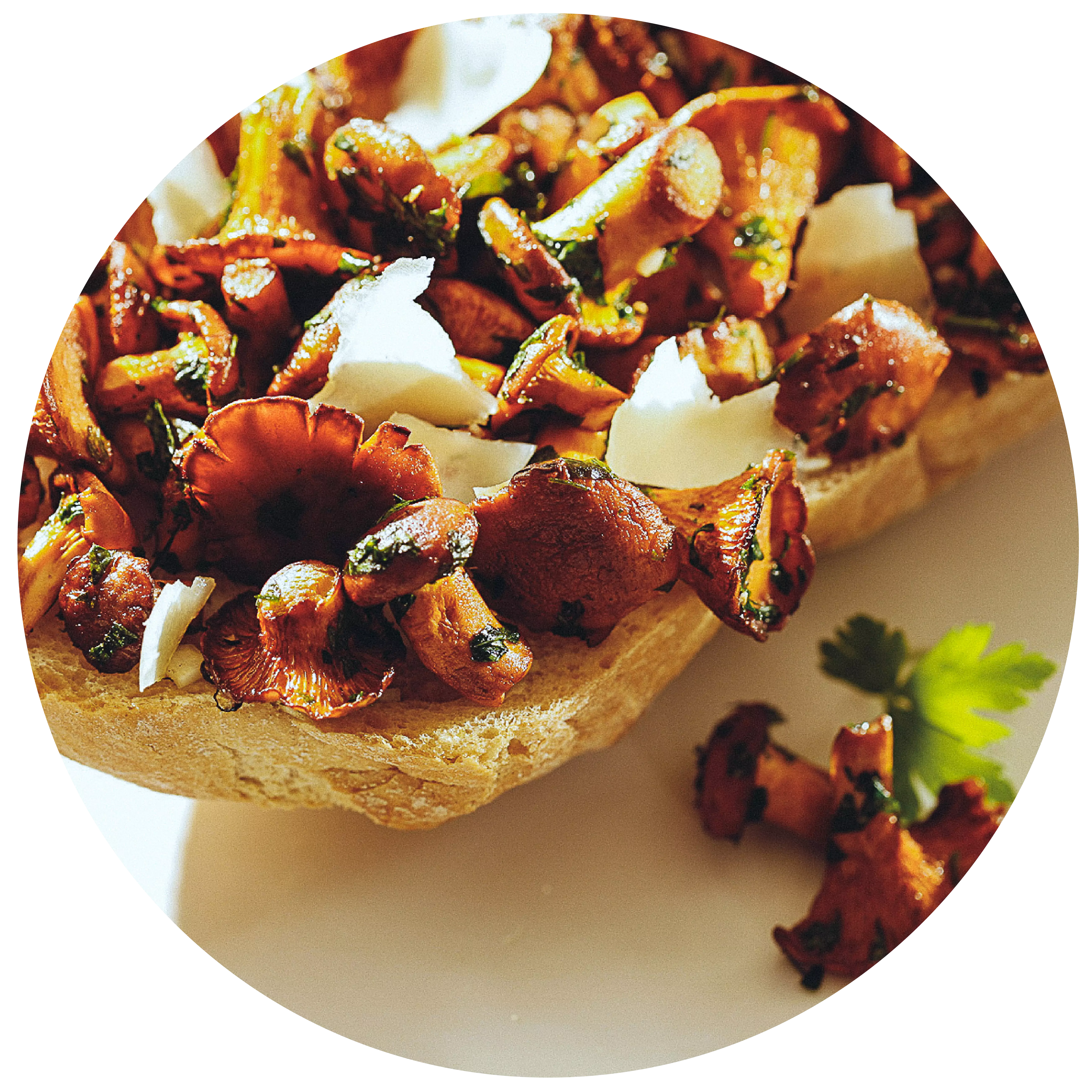
with chanterelle and onion leek, served with potato and grilled cheese ragout in grilled tomato Chop of Hunsrück veal
with chanterelle and onion leek, served with potato and grilled cheese ragout in grilled tomato
- 4 x 300 Gramm Kotelettes
- 250 Gramm Pfifferlinge
- 4 große Kartoffeln
- 2 große Grilltomaten
- 180 Gramm Flammkäse
- 50 Gramm Knollensellerie
- 200 ml Spätburgunder
- 200 ml Sahne
- 50 Gramm Butterschmalz
- 2 EL Butter
- 1 EL Rapsöl
- 6 Stück Lauchzwiebeln
- 1 kleine Knoblauchzehe
- je 1 Zweig Thymian & Rosmarin
- je 1 TL Majoran & Oregano
- nach Belieben Salz & Pfeffer
Peel the potatoes, celery and garlic clove, crush the garlic and cut the potatoes and celery into small cubes. Heat the rapeseed oil in a pan, add the potato and celery cubes, sauté briefly and top up with ⅔ of the cream. Season with salt, pepper and the crushed garlic and leave to simmer for approx. 6 minutes. Add the oregano, marjoram,
add a little thyme and the diced flambé cheese and remove from the oven immediately.
Season the veal chops with pepper, fry in the pan in hot clarified butter for approx. 3 to 4 minutes on both sides and then cook in the oven at 160 degrees for 8 to 9 minutes. Then leave the meat to rest briefly.
Cut the grilled tomatoes in half, remove the skin, place on a baking tray and fill with the potato and flambé ragout. Place the baking tray in the oven with the chops for approx. 6 - 7 minutes. Add 1 tbsp of butter and the sprig of rosemary to the roasting mixture, deglaze with the Pinot Noir, reduce a little and refine with the remaining cream. Season to taste with salt and pepper.
Clean the chanterelles and spring onions. Wash the spring onions well, cut into 5 cm pieces, blanch briefly in salted water and rinse in ice water. Heat 1 tbsp butter in a pan, add the chanterelles and sauté for 2 - 3 minutes. Add the spring onions and the rest of the thyme and season with salt and pepper.
<p- Riesling (trocken)

with wild duck breast, porcini mushrooms and glazed chestnuts Herb salad
with wild duck breast, porcini mushrooms and glazed chestnuts
- 150 Gramm Wildkräuter
- 4 EL Olivenöl
- 2 EL Balsamessig
- 8 Stück Wildentenbrüste (a 100g)
- 2 EL Sonnenblumenöl
- 4 EL Honig
- 1 EL Thymian
- 200 Gramm Steinpilze
- 20 gekochte Maronen
- 100 ml Apfelsaft
- 2 El Zucker
- nach Belieben Salz & Pfeffer
Clean, wash and pat dry the wild herbs. Marinate with olive oil and balsamic vinegar and season with salt and pepper.
Preheat the oven to 220°C top and bottom heat. Season the wild duck breasts with salt and pepper, sear on the meat side in a pan with sunflower oil and cook in the preheated oven for about 8 minutes on the skin side. Remove the duck breast, brush the skin side with honey and thyme and roast for another 2 minutes on a high heat until crispy.
Clean the porcini mushrooms and cut into slices. Fry in a pan in oil on both sides, remove and keep warm. Caramelise the sugar in the pan, deglaze with the apple juice and simmer until the caramel has dissolved. Add the chestnuts and add a little more apple juice if necessary.
- Pinot Blanc (trocken)
- Gutedel (trocken)
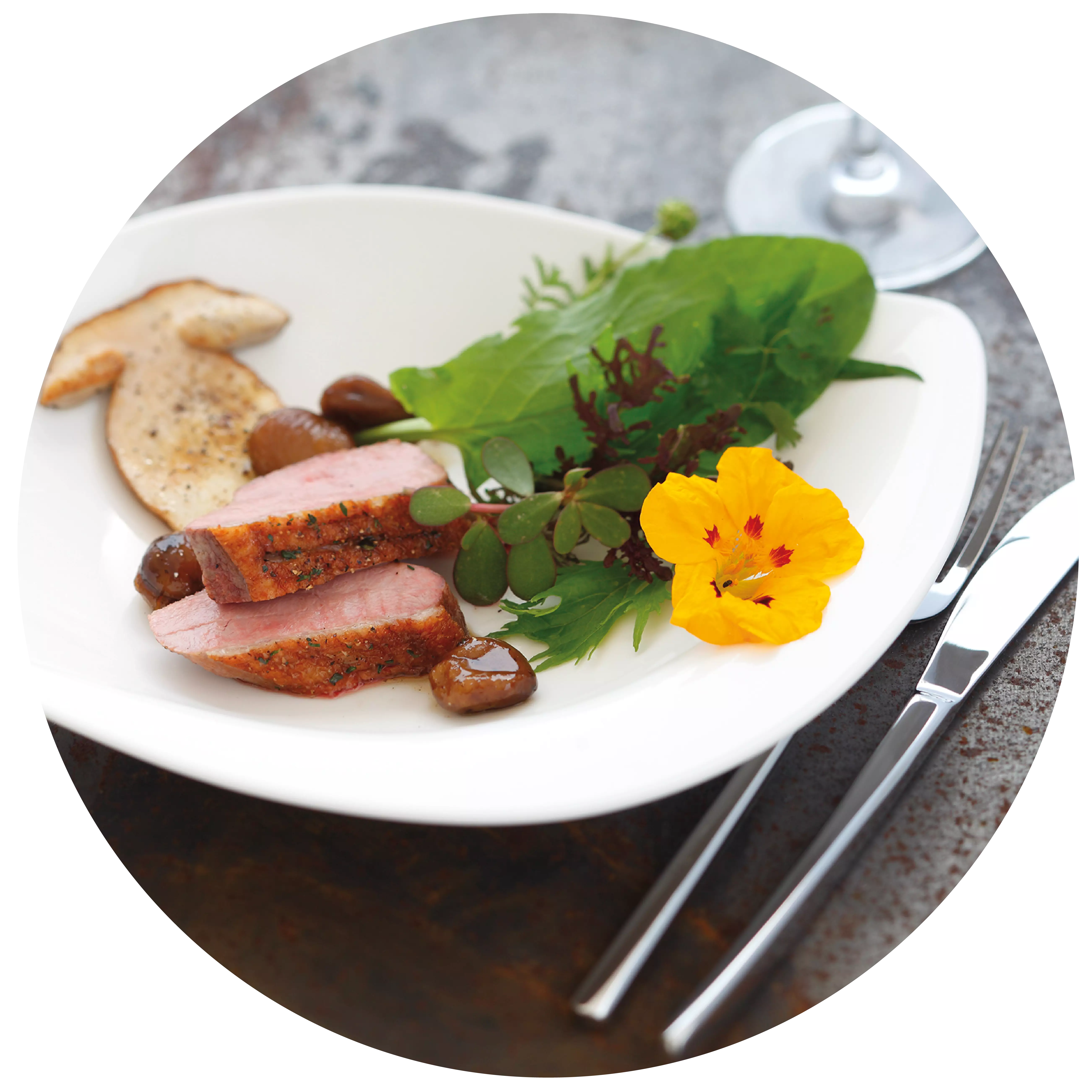
Events
-
Show
winetasting in our winery - cheese & wine
Mainz-Hechtsheim



